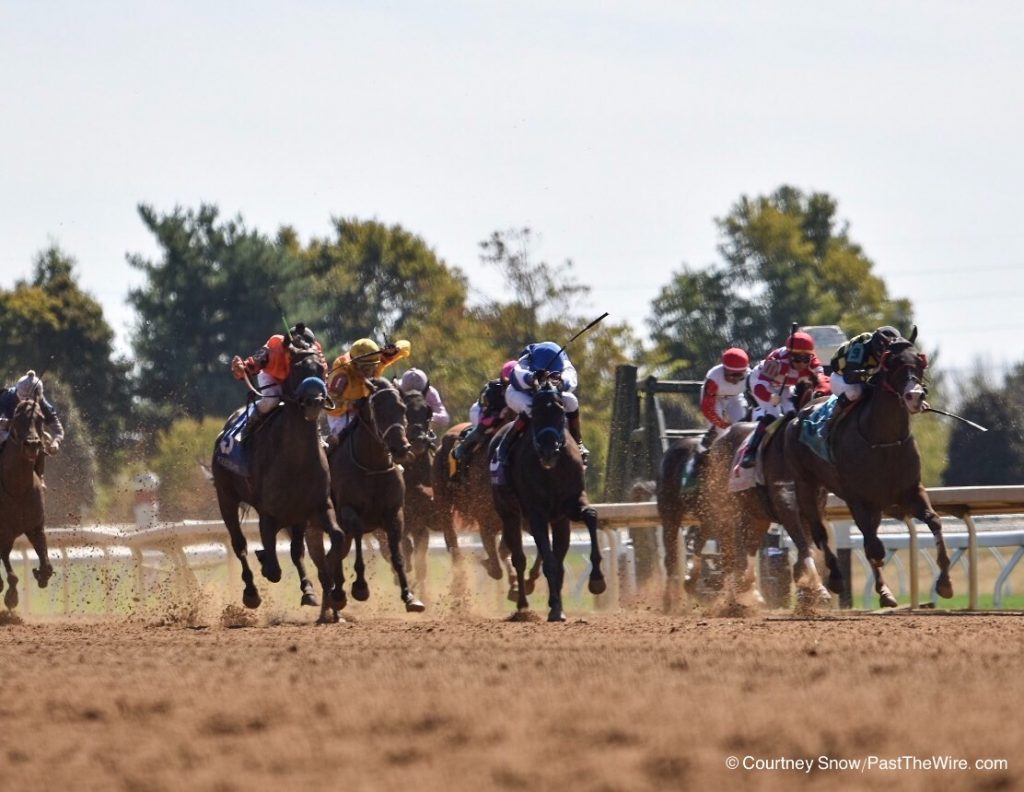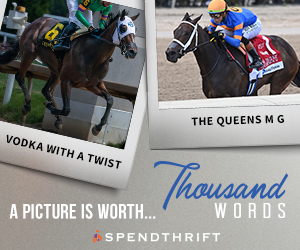
Horse racing has received more than a few black eyes this year. From the unfortunate incidents at Santa Anita, the Kentucky Derby controversy, to the recent news regarding Justify, 2019 has been quite the year. However, our industry and community are extremely resilient. When knocked down, we tend to get right back up and continue with business as usual. This is one of the most admirable traits of our sport, however it also has the tendency to be the most detrimental. Though this year has yielded unprecedented innovation throughout our industry, with many tracks making huge strides regarding equine welfare and safety, our “business as usual” attitude in other areas will no longer cut it if we want our industry to survive.
Horse racing, particularly in the US, has a tendency to be very insular, often struggling to connect with the outside world. This is understandable, as unlike most professions, horse racing is a lifestyle, not a job. We work in the industry because it is our passion. The majority of us wouldn’t know what to do if we woke up tomorrow and racing had vanished. Our time is spent either working or talking to one another about some aspect of the sport. We live it. We breathe it. However, because our passion is all consuming, we have trouble connecting with those outside of the sport and understanding the views they have of us. This is where the gulf between “us” and mainstream culture begins, and it extends into our marketing and communication.
As an industry we are very good at short-term marketing and marketing to one-another, but struggle with long-term brand building. “Come to Keeneland this week to buy your next Gr.1 winner, Twilight racing at Belmont Park begins next month, Impressive maiden winner for Kitten’s Joy, etc, etc.” We place these ads in industry publications, create social media posts targeted at industry members, send e-mail campaigns to them as well, and so on and so forth. Who can blame us? That’s just smart marketing. It targets where the consumer resides, consistently feeds them material, and helps create a better chance for a return on Ad spending. While this focused approach is great for short-term business, it essentially creates a situation where we are all fishing in the same small pond and does little for the overall health of the industry. What if we were to grow the pond?
With the technology available to us today, we are now able to target market better than ever. We can segment markets by age, sex, interests, purchasing habits, etc. It is the most effective age of marketing. Have you ever had a product you had previously looked at on Amazon magically show up in front of you on a different website? With today’s tech and data, we can actually anticipate which type of person is most likely to become a fan or a potential horse owner, and then show them an ad in the right place at the right time to catch their interest. This is due to the hypertargeting ability of the new marketing tools available. These tools provide us the ability to go outward, find new potential consumers, hit them with engaging material, and grow the pond of the industry. However, this requires us to know our target demographic and how to speak to them. It also requires an interest by the industry to seek people outside of it.
Typical racing coverage is filled with handicappers discussing odds, giving their selections, and providing bets in the race. There is limited coverage of developed storylines, behind the scenes footage, or interviews with high profile individuals to develop hype. In essence, there is very little to draw the general public in and create an emotional attachment to the sport.
No other professional sport functions like this. When you turn on a football or basketball game the media talks about the storylines, the matchups, the rumors, and the rivalries. They interview the coaches, the players, show footage of previous games, and then further develop the storylines from the information those interviews provide. They begin building up hype behind the event weeks in advance and have it peak right before game time. The upcoming game is promoted all over outlets where their “potential” consumers might see it, knowing that they’ll draw in their existing fan base and hoping to bring in some new ones. Have you ever asked somebody outside of the industry when the Kentucky Derby is? I have. I’ve even asked people on Kentucky Oaks Friday when the Derby is and most have no clue. If you don’t inform people about something, how do you expect them to know, and better yet care?
On top of that, horse racing has its work cut out for it when compared to other sports. The majority of people in the world have never and probably will never, work with a horse. This makes it extremely difficult for them to relate to horses and the sport. Unlike football, basketball, or baseball you can’t just go out into the cul-de-sac and drum up a game of horse racing or sign your kid up for the local youth horse racing league. There are only a few ways to develop new markets and following for the sport. We have to draw people into the tracks and provide them with a unique experience they’ll never forget. Our television coverage must be so exciting that when people accidentally stumble onto it, their interest is piqued. Finally, we have to market the sport like crazy to the general public. This is the recipe that every major sport in America follows and it can be no different for horse racing.
So, what’s the solution? Every other major sport is unified through a governing body which looks out for the sport’s best interest. Not only do they set the rules for the sport, but they innovate and promote the sport to keep up with modern consumer demands. We don’t have a governing organization in the US and probably won’t for some time. With no governing body to look out for the sport, what then can we do? We must create a national industry media, PR, and advertising organization that works on behalf of the entire industry, looking out for the good of the sport, and helping the sport connect with the general public. So, what would this organization do exactly?
Anything that relates to promoting horse racing, crafting and managing racing’s public image, developing strategic marketing strategies to grow new markets for the sport, and continuously keeping horse racing in the public eye. This includes:
- Creation of multi-media regional and national PR/advertising campaigns on behalf of the industry focused on mainstream market penetration.
- Developing and nurturing mainstream media relationships to feed the major networks stories and be a source they can turn to in times of crisis.
- Generation of strategic partnerships with businesses and media companies to create new promotional opportunities for the sport. Such as:
- Collaborative advertising campaigns with companies who would like to use horse racing’s image
- Product partnerships
- Donated media/advertising space
- Building out a large group of influential mainstream brand ambassadors who enjoy racing to leverage their attention, followers, and provide further social proof behind their support of horse racing.
- Creation of marketing initiatives that capitalize on popular trends to grow interest in racing amongst millennials and generation Z, etc.
- Carrying out media training workshops with trainers and jockeys.
- Creation and running of feel-good programming, like “NBA Cares”, that can be run during national broadcasts to show how racing is contributing to the world; such as helping local communities, horse and animal welfare, etc. (The modern consumer wants entities to stand for something. Those that do are thriving and those that don’t are dying. Studies show that millennials and generation Z will only become consumers of a brand if what that entity stands for resonates with what they believe.)
Essentially it would be a high-level advertising agency for the industry. It’s no secret that racing is typically behind the times and slow to react. As an industry, we can no longer afford to continue with “business as usual,” as there is so much more competition for the modern-day person’s attention. This entity would keep racing up with the times while strategically making decisions to place us ahead of “soon to be” trends regarding consumer attention.
Many of us know and can agree that horse racing is one of the greatest sports of all time. From breeding, to the sales, to training, handicapping, race day, and beyond, there is an aspect to this sport for everyone to love. There is something about it that stirs emotion like no other sport can. It is time to share that feeling with the rest of the world. It’s time to place horse racing back where it deserves to be, front and center.
Michael Wilson is a former thoroughbred trainer on the NYRA and Florida circuit, having trained for clients such as Barry Schwartz and Zayat Stables. Before opening his stable, he honed his craft working for Bob Baffert, Richard Mandella, Doug O’Neill, D. Wayne Lukas, and Kenny McPeek, as well as graduating from the prestigious Godolphin Flying Start course. He left training briefly to gain an outsider’s perspective on the industry, to become an expert in business and marketing; all with the plan of returning to racing to help innovate the industry and move it forward. He is currently the CEO of Dreamdom Media a branding, marketing, and advertising agency based in Fort Collins, Co.
For more information on how to build and institute the idea presented in this article, e-mail Michael at mwilson@dreamdommedia.com or follow him on Instagram, Facebook, and Twitter at @michaelsrwilson.



